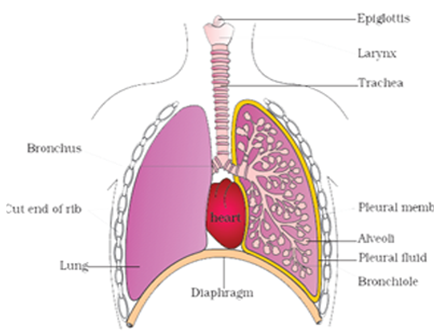Human respiratory system
Ncert shortnotes on human respiratory system
- Human respiratory system consists of a pair of nostrils, pharynx, larynx, bronchi and bronchioles that finally terminates into alveoli.
- Nasal chamber open into pharynx that leads to larynx. Larynx contains voice box (sound box) that help in sound production.
- The trachea, primary, secondary and tertiary bronchi and initial bronchioles are supported by incomplete cartilaginous rings to prevent collapsing in absence of air.
- Each bronchiole terminates into an irregular walled, vascularized bag like structure called alveoli.

- The branching network of bronchi, bronchioles and alveoli collectively form the lungs.
- Two lungs are covered with double layered pleura having pleural fluid between them to reduce the friction on lung surface.

- Conducting parts include nostrils, pharynx, larynx and trachea. Main functions include-
- Transport of atmospheric air to alveoli.
- Removing foreign particles from air, humidifying it and bringing it to body temperature.
- The exchange parts are alveoli. It is the site of actual diffusion of and C between blood and atmospheric air.
Steps of Respiration
- Breathing in which Oxygen rich atmospheric air is diffused in and C rich alveolar air is diffused out.
- Diffusion of gases across alveolar membrane.
- Transport of gases by blood.
- Diffusion of and C between blood and tissues.
- Utilization of by cells to obtain energy and release of C (cellular respiration).




Comments
Post a Comment